Image a gymnast performing a ground routine. Their choices for motion are virtually infinite — they’ll run, flip, cartwheel, leap, or twist.
Any transfer they make, nonetheless, may be damaged down into three broad classes of motion, which anatomists describe utilizing the three planes of movement: They may transfer ahead or backward or shuffle or flip to their left or proper. (They may additionally mix any of these kind of motion, in fact, however extra on that later.)
Understanding how your physique strikes inside these planes gives you one other device that may assist you make your exercise safer, more practical, and extra enjoyable.
What Are the three Planes of Movement?
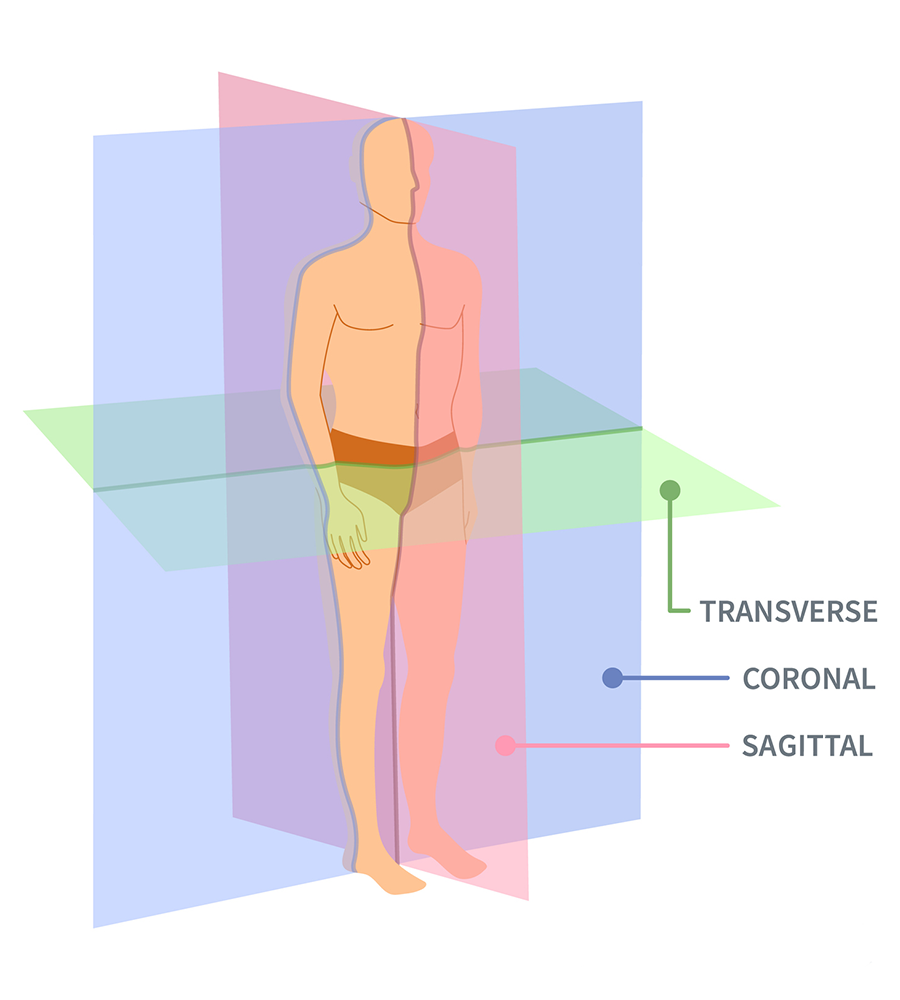
The planes of movement are a option to describe and perceive human motion of every kind — from figuring out to dancing to respiratory — by a extra exact, anatomical lens. You possibly can consider these planes as sheets of glass that divide the physique into totally different halves:
- Sagittal aircraft: Separates the physique vertically into left and proper halves
- Frontal aircraft: Separates the physique vertically into back and front halves
- Transverse aircraft: Separates the physique horizontally into prime and backside halves
Any motion you carry out that’s broadly parallel to any of these physique planes is taken into account to happen in that aircraft of movement.
Confused? Follow us.
1. The sagittal (longitudinal) aircraft: ahead, march
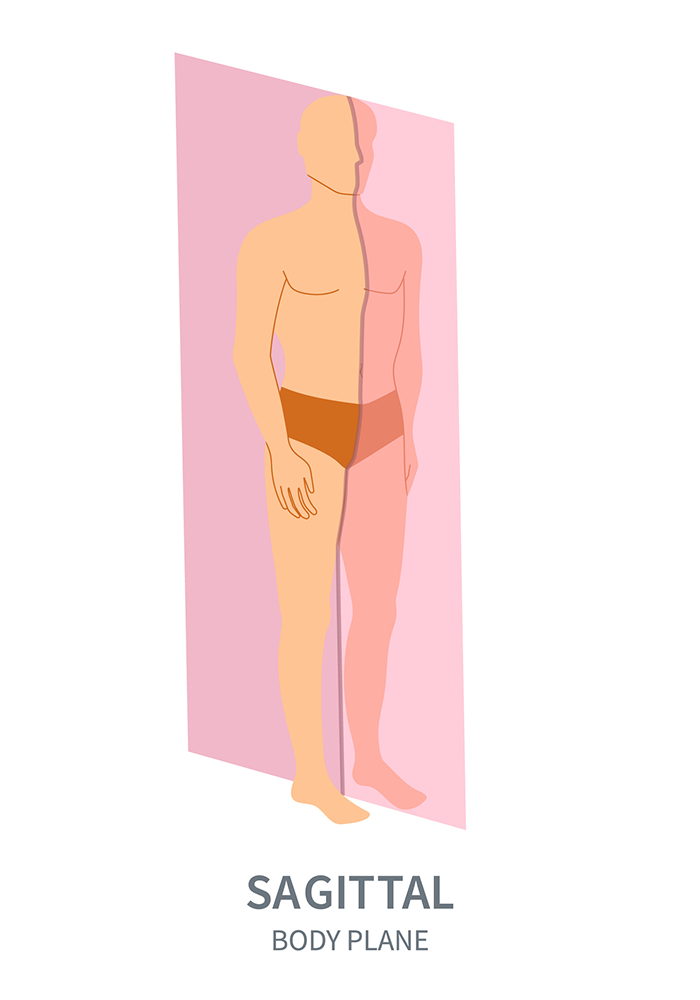
The aircraft we encounter most frequently in life — and doubtless the one which’s best to grasp — is the sagittal, or longitudinal aircraft. That is the aircraft that cuts you in half vertically at your heart line, separating the left and proper sides of your physique.
Any motion the place your limbs or backbone transfer alongside this line — or parallel to it — is taken into account sagittal, or longitudinal. (Sagittal derives from a Latin phrase which means “archer.” Image capturing an arrow from a bow at a faraway goal, and also you get the thought.)
Actions within the sagittal aircraft:
Many basic gymnasium strikes are thought of sagittal-plane-dominant: lunges, squats, curls, crunches, sit-ups, and push-ups. In these workouts, your arms, legs, or backbone all transfer parallel to that central, sagittal aircraft. (Back and front flips are additionally sagittal.)
Day-to-day strikes like strolling — the place your legs and arms swing ahead and again — are additionally principally sagittal. It’s the aircraft most of us are most snug in.
From a therapeutic, or anatomical perspective, flexion and extension — curling the backbone ahead or bending backward — are basic examples of sagittal motion.
2. The frontal (coronal) aircraft: left, proper, and heart
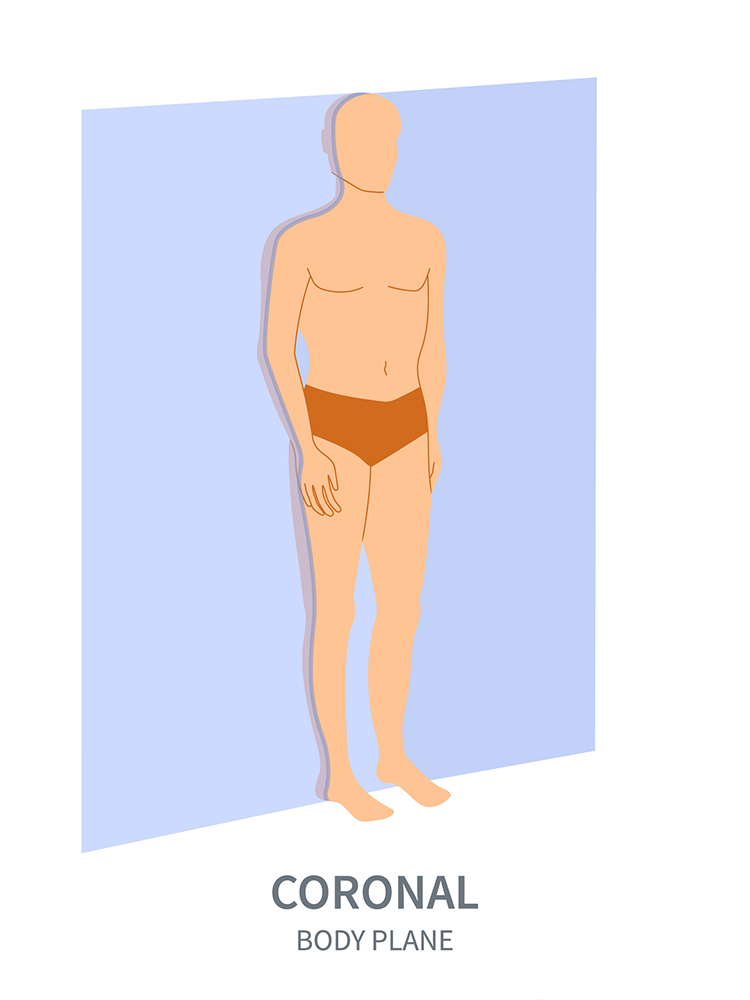
Harder to image however equally essential is the frontal or coronal aircraft. That is the aircraft that runs vertically by the physique, one aspect to the opposite, and separates the back and front sides of your physique.
Image your self standing on a slim ledge with all the again aspect of your physique — heels, calves, glutes, higher again, elbows, the backs of your fingers and the again of your head — pressed towards a wall. Any transfer you can also make whereas sustaining these contact factors is a frontal aircraft transfer.
Actions within the frontal aircraft:
Frontal aircraft actions embrace the side-step, or aspect shuffle, extending your arms out to the perimeters, tilting your head left and proper, or side-bending your whole torso come what may. In case you’re agile and courageous, cartwheels additionally happen within the frontal aircraft.
The lateral-shuffle actions in sports activities like basketball and tennis, are all frontal. Facet-lunging can also be a frontal motion.
Anatomically, abduction — or elevating your arm or leg away out of your heart line — is a frontal aircraft transfer.
3. The transverse (axial) aircraft: twist and shout
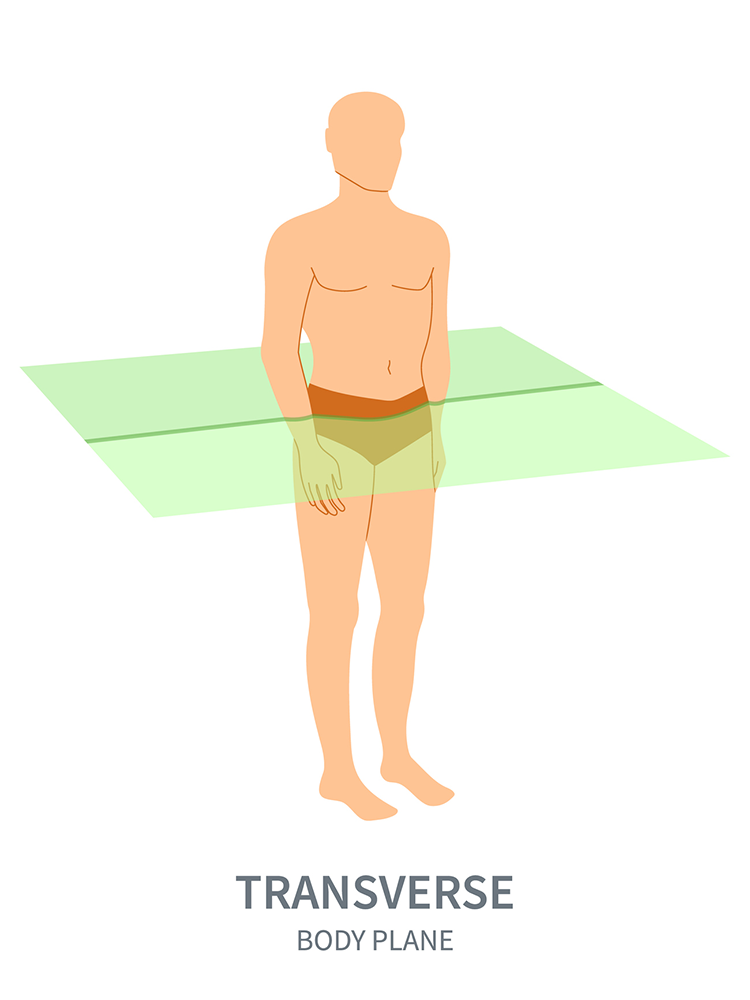
The ultimate aircraft of movement is one we don’t take into consideration a lot, though we transfer by it on a regular basis. It’s the aircraft that runs parallel to the ground, also called the transverse or axial aircraft.
This aircraft encompasses rotation round your vertical axis. A ballet dancer’s pirouette is a basic instance: Her whole physique is popping round a single, nonetheless level.
Actions within the transverse aircraft:
We regularly see transverse aircraft motion in warmups — hip circles, neck rolls, ankle circles, and trunk rotations are all good examples. Some core actions — resembling Russian twists or bicycle crunches — are transverse-plane dominant, as are lots of the rotating stretches in yoga.
Lots of the strongest athletic strikes you are able to do, resembling swinging a bat or a racquet, throwing a discus, or executing a roundhouse kick or a hook punch in MMA, are transverse aircraft strikes; if you wish to generate energy, the transverse aircraft is your ticket.
Anatomically, rotating any joint alongside an axis is a transverse aircraft transfer.
Anatomical Phrases
Jargon alert: The next phrases — often utilized in medical or therapeutic settings — describe numerous places, instructions, and kinds of motion on the physique. In all instances, assume that you just’re referencing an individual standing upright with their palms rotated ahead, thumbs pointing outwards:
Directional phrases
| Anterior | In direction of the entrance aspect of the physique |
| Posterior | In direction of the rear of the physique |
| Deep | Farther from the floor of the physique |
| Superficial | Nearer to the floor of the physique |
| Distal | Farther from the middle of the physique or the origin of a physique half (i.e., The ankle is distal to the knee, whereas the toe is distal to the ankle.) |
| Proximal | Nearer to the middle of the physique or the origin of a physique half (i.e., The shoulder is proximal to the elbow, whereas the elbow is proximal to the wrist.) |
| Inferior | In direction of the ft |
| Superior | In direction of the top |
| Lateral | Away from the middle line of the physique |
| Medial | In direction of the middle line of the physique |
| Median | The midline of the physique |
Motion phrases
| Abduction | The transferring of a limb away from the middle line of the physique (i.e., from standing, elevating your arm out to the aspect) |
| Adduction | The transferring of a limb in direction of the middle line of the physique (i.e., from standing, reducing your arm from an overhead place again to your waist) |
| Eversion | The lateral rolling of your ft (i.e., in direction of their outdoors edges) |
| Inversion | The medial rolling of your ft (i.e., in direction of their inside edges) |
| Extension | The opening or straightening of a joint (i.e., straightening your arm on the elbow) |
| Flexion | The bending or closing of a joint (i.e., bending your knee) |
| Exterior Rotation | The turning of a limb away from the middle line of the physique (i.e., from standing, rotating your leg on the hip joint in order that your foot turns outwards) |
| Inside Rotation | The turning of a limb in direction of the middle line of the physique (i.e., from standing, rotating your leg on the hip joint in order that your foot turns inwards) |
| Pronation | The turning of a hand or foot medially, or in direction of the middle line (i.e., turning your fingers palm down or placing weight on the within of your foot) |
| Supination | The turning of a hand or foot laterally, or away out of your heart line (i.e., turning your fingers palm down or placing weight on the skin of the foot) |
Why Ought to You Study the Planes of Movement?
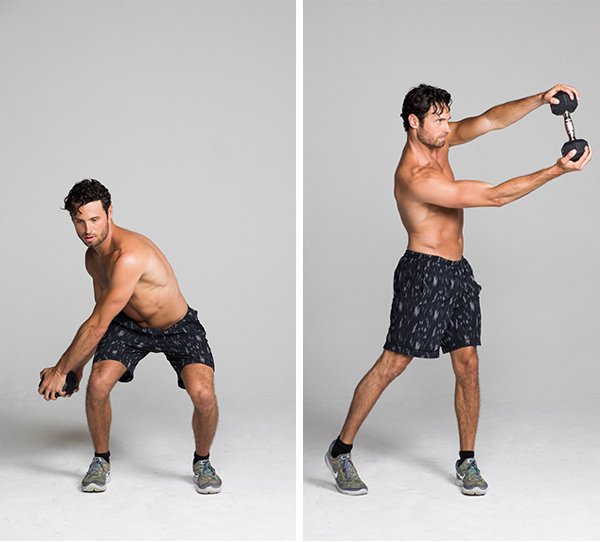
While you’re designing a exercise program for your self — notably in case your targets embrace athletic efficiency, ache discount, and longevity — it’s useful to think about the planes of movement by which your workouts happen, not simply concerning the muscle tissue you’re coaching.
By now you already know that almost all gymnasium actions — and exercise packages — are sagittally dominant (simply stroll by the cardio space in any gymnasium and the proof is true there). This isn’t unhealthy — working, stair climbing, squatting, lunging, and biking are all nice workouts.
However such sagittal actions don’t totally stimulate your stabilizing muscle tissue, notably in your decrease physique. Over time this will result in damage. So that you’ll seemingly lengthen your healthspan within the health trenches by together with some frontal and transverse aircraft actions in each exercise as effectively.
Exercise packages on BODi are all designed to maneuver you thru the three planes of movement whereas emphasizing compound (multi-joint) workouts, serving to you are feeling match and powerful in on a regular basis life.
A Caveat to the Planes of Movement
The planes-of-motion mannequin isn’t precise; no human motion happens completely in a single aircraft of movement, and you could possibly in all probability quibble with the categorization of almost any motion.
An overhand-grip pull-up, as an illustration, could possibly be described as a sagittal transfer as a result of the elbows journey ahead relative to the trunk. But when your elbows are likely to journey outwards as a substitute of ahead, that makes it extra of a frontal-plane transfer.
Our our bodies aren’t made up of proper angles, straight traces, or arduous edges. Each time you’re taking a step ahead or again — a sagittally-dominant motion — the joints of your knees, ankles, and hips additionally transfer subtly within the frontal and transverse planes to soak up forces touring up by your skeleton. Each motion you carry out happens on all three planes.
The reply to this quandary? Don’t fear about it. Planes of movement are approximate.

